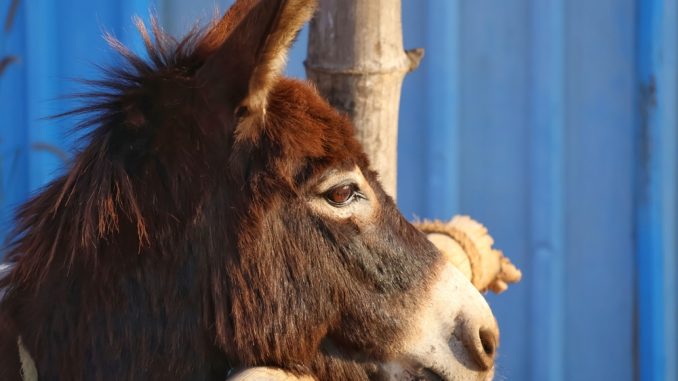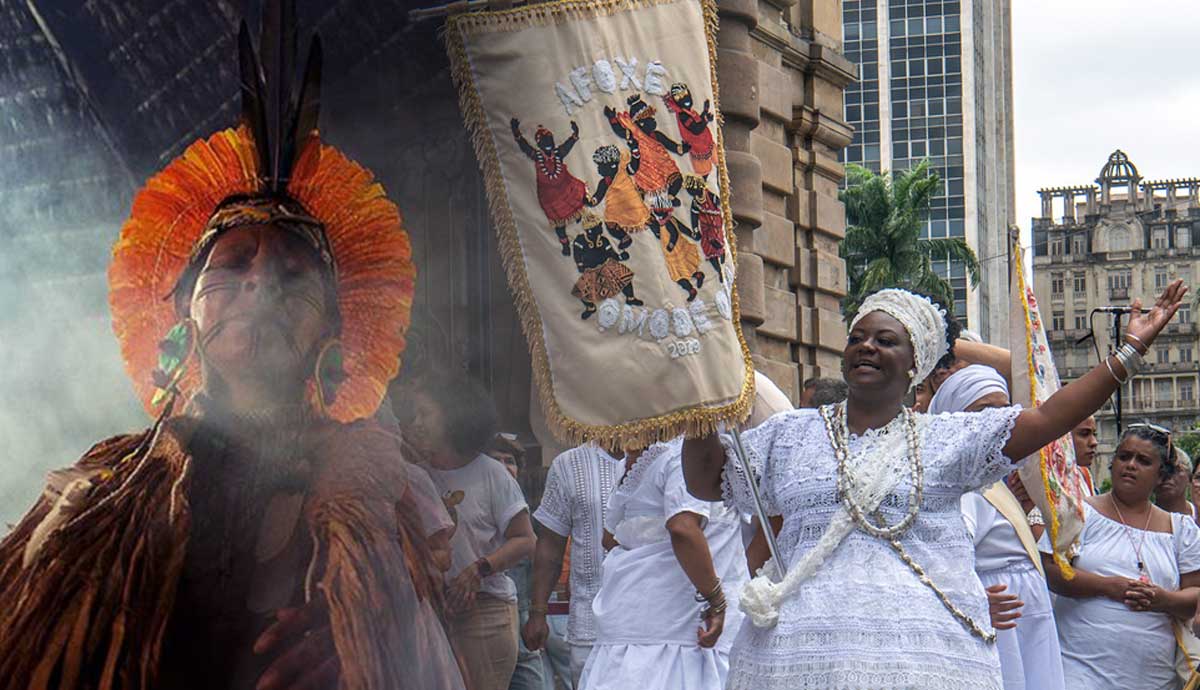0 Reacties
0 aandelen
81 Views

Bedrijvengids
Elevate your Sngine platform to new levels with plugins from YubNub Digital Media!
-
Please log in to like, share and comment!
-
 YUBNUB.NEWSGoaded by Tariffs, European Pharmaceutical Industry Pivots to the USUS dollar banknote and medicines are seen in an illustration photo. Dado Ruvic/ReutersThe U.S. tariff policy and its unmatched pharmaceutical market are pulling European drugmakers to invest more heavily,0 Reacties 0 aandelen 81 Views
YUBNUB.NEWSGoaded by Tariffs, European Pharmaceutical Industry Pivots to the USUS dollar banknote and medicines are seen in an illustration photo. Dado Ruvic/ReutersThe U.S. tariff policy and its unmatched pharmaceutical market are pulling European drugmakers to invest more heavily,0 Reacties 0 aandelen 81 Views -
 YUBNUB.NEWSPolitics, Power, and Possibilities LN Radio[View Article at Source]By Liberty Nation AuthorsOn this episode of Liberty Nation Radio, we deep dive into the most important political contests of the day.0 Reacties 0 aandelen 79 Views
YUBNUB.NEWSPolitics, Power, and Possibilities LN Radio[View Article at Source]By Liberty Nation AuthorsOn this episode of Liberty Nation Radio, we deep dive into the most important political contests of the day.0 Reacties 0 aandelen 79 Views -
 YUBNUB.NEWSWill Snapback Sanctions Curtail Irans Nuclear Program? Heres What Experts ThinkMembers of the United Nations Security Council vote against a resolution that would permanently lift U.N. sanctions on Iran at the U.N. headquarters in New York City on Sept. 19, 2025. Eduardo Munoz/ReutersThe0 Reacties 0 aandelen 80 Views
YUBNUB.NEWSWill Snapback Sanctions Curtail Irans Nuclear Program? Heres What Experts ThinkMembers of the United Nations Security Council vote against a resolution that would permanently lift U.N. sanctions on Iran at the U.N. headquarters in New York City on Sept. 19, 2025. Eduardo Munoz/ReutersThe0 Reacties 0 aandelen 80 Views -
 YUBNUB.NEWSIn an Email Made Public, Portland Police Blame Conservative Victims for Being Attacked by Anti-FAIn our last post, we talked about how the Trump Administration has launched an investigation into the Portland Police, arising from charges that they are not enforcing the law evenhandedly when it comes0 Reacties 0 aandelen 80 Views
YUBNUB.NEWSIn an Email Made Public, Portland Police Blame Conservative Victims for Being Attacked by Anti-FAIn our last post, we talked about how the Trump Administration has launched an investigation into the Portland Police, arising from charges that they are not enforcing the law evenhandedly when it comes0 Reacties 0 aandelen 80 Views -
 YUBNUB.NEWSKamala Harris just made one delusional claim that had even her own supporters rolling their eyesFlukycliks via Shutterstock Kamala Harris cant seem to accept reality. The failed presidential candidate is living in a fantasy world where losing by millions of votes counts as "close." And Kamala0 Reacties 0 aandelen 80 Views
YUBNUB.NEWSKamala Harris just made one delusional claim that had even her own supporters rolling their eyesFlukycliks via Shutterstock Kamala Harris cant seem to accept reality. The failed presidential candidate is living in a fantasy world where losing by millions of votes counts as "close." And Kamala0 Reacties 0 aandelen 80 Views -
 YUBNUB.NEWSSen. Mullin Slams Democrats for Prioritizing Illegal Immigrant Healthcare Over Americans Amid Government ShutdownBy Gloria Ogbonna During an interview on Breitbart News Saturday, Senator Markwayne Mullin (R-OK) delivered a sharp critique of the Democratic Party, accusing its leaders of abandoning the needs of everyday0 Reacties 0 aandelen 80 Views
YUBNUB.NEWSSen. Mullin Slams Democrats for Prioritizing Illegal Immigrant Healthcare Over Americans Amid Government ShutdownBy Gloria Ogbonna During an interview on Breitbart News Saturday, Senator Markwayne Mullin (R-OK) delivered a sharp critique of the Democratic Party, accusing its leaders of abandoning the needs of everyday0 Reacties 0 aandelen 80 Views -
The '80s California Fast Food Chain That Tried To Make A ComebackThe '80s California Fast-Food Chain That Tried To Make A Comeback If you grew up in SoCal during the 1970s and 1980s, you probably remember a cheap that did tacos and burgers. It wasn't a major Mexican fast food chain like Taco Bell — it...0 Reacties 0 aandelen 711 Views
-
 WWW.THECOLLECTOR.COMHow African, Indigenous, and Catholic Beliefs Shaped BrazilBrazils ethnic diversity results from its complex colonial past, in which Native peoples, European colonizers, and African slaves coexistedoften under oppressive circumstances. These interactions gave rise to a unique religious syncretism, exemplified in the reinterpretation of Indigenous myths and Afro-Brazilian religions such as Candombl and Umbanda. But, beyond illustrating diversity, the emergence of these traditions represents some of the most common resistance strategies adopted by those subjected to colonization. These blended spiritualities symbolize the resilience of African and Indigenous identities, even when intertwined with Catholic beliefs.Brazil: A Landscape of Religions?Religious festivity in Brazil, by Adam Jones, 2009. Source: FlickrOccupying a territory of continental dimensions, Brazil has a unique landscape of cultures and traditions that are widely variable among its different regions. This diversity is a product of the interactions between Native, European, and African ethnicities that have coexisted since the beginning of the countrys colonization in the 16th century.One result of this colonial past is the emergence of blended spiritual practices. Even if Christianity is the predominant religion among the current population, it is not uncommon to find those who combine Christian practices with ancestral beliefs and religious traditions that often originated from Indigenous or African spiritualities.Examples include Caboclo-Catholicism, in which Native beliefs are combined with Catholic elements, and Afro-Brazilian religions such as Candombl and Umbanda, practiced by around 2% of the total populationa small percentage, but elements from these religions are widely present throughout the country and even among those who officially consider themselves Christian.The Land of the Holy Cross: Christianity Arrives in BrazilFirst mass in Brazil, painting by Victor Meirelles, 1860. Source: Museu Nacional de Belas ArtesAfter centuries of Indigenous development and expansion in the territory of present-day Brazil, the arrival of Portuguese explorers in 1500 led to a radical change in the cultural, political, and economic landscape of the region once called Pindoramathe land of the palmtrees in the Tupi language.Brazil officially became a Portuguese colony in 1532. The land was immediately incorporated in the Portuguese Empires plans for economic expansion, explored first for the extraction of Brazilian wood plantused for the production of valuable red pigments and dyesand later for the cultivation of sugar.With the new colonizers came a new religion. Christian priests, especially from the Jesuit order, were sent to the colony to evangelize the Natives, expanding the domain of the Catholic Church beyond the European continent.This was often met with resistance. In some cases, the Native and later African populations defied colonial power by maintaining their traditional practices. In other situations, however, more subtle resistance strategies were adoptedcreating the religious syncretism that deeply marks the colonys religious scene today.What Is Syncretism?Photograph of an Umbanda practicer. Source: EspiritualisticeReligious syncretism is a typical outcome of colonization. This term is often used by anthropologists and historians in investigating the spiritual beliefs that result from the contact between two or more religious traditions, leading to a hybrid spirituality.But contrary to mainstream belief, religious practices from the conquerors are not merely adopted by the conquered; there is, instead, an active transformation of these religious elements, with the conquered communities reinterpreting them in accordance with their own cultures.Therefore, their original beliefs and practices are not eradicated. On the contrary, a new, blended religious practice is created in which the beliefs of the conquered culture are often hidden or disguised. This syncretism allows them to retain a sense of identity and agency, even as they seemingly adopt aspects of the dominant religion.Sculpting Myrtle? The Challenges of Indigenous EvangelizationIndigenous crossing a river (the slave hunter), by Agostino Brunias. Source: Museu de Arte de So PauloAttempts to convert the Indigenous population to Christianity did not always meet the Churchs expectations. Jesuit priest Antnio Vieira expressed his concerns on this matter in the famous Sermon of the Holy Spirit, delivered in 1657 in Lisbon and often referred to as The Marble and the Myrtle. He compared the Evangelization of pagan communities in the Old and New World to creating a sculpture in marble and myrtle, respectively. The first is harder to sculpt but retains its shape once complete. Sculpting myrtle is much simpler, but the material easily reverts to its original form.Sculpting marble was like Christianizing communities in the Old World: they were more resistant to embracing Christian values but tended to retain the new religious principles once they were finally learned. On the other hand, Indigenous communities in America often displayed an openness and willingness to learn the European faith but easily returned to their original practices and forgot Christian ideas.The Sons of Pindorama, gravure by Thodore de Bry, 1562. Source: Wikimedia CommonsThe Brazilian anthropologist Eduardo Viveiros de Castro addresses this issue in his famous work The Inconsistency of the Indian Soul. As he analyses the cultural and religious aspects of the Native communities, Castro presents an interesting outcome: the seeming willingness to embrace the Christian faith was due to the fact that its principles resonated within their own spiritual beliefs and cultural frameworks.This suggests that indigenous peoples were not necessarily embracing Christianity, but rather integrating or interpreting Christian ideas through the lens of their own faith. Contrary to European belief, the Indigenous were not so much willing to be converted as able to adapt the missionaries messages to their worldview.Reinterpreting Indigenous Myths Through a Christian LensPhotograph of an Amazonian Shaman by Amaznia Latitude, 2020. Source: Amaznia LatitudeIn an effort to translate the Christian principles and motifs, the Jesuit priests relied on comparisons with myths and spiritual beings from Native mythology. The Indigenous were also active in the process of evangelization, reinterpreting the European religion in their own terms and creating syncretic religious practices.Perhaps the most significant outcome of the Christian-Indigenous syncretism is found in medical and healing practices. The combination of Catholic prayers with Indigenous healing rituals and medicinal plants created the so-called curandeirismo mestiomestizo healing. Practices that derive from this blend are widespread throughout the country, remaining an important part of Brazilian communities and popular healing practices today.Another intriguing example is the reinterpretation of the myth of Tup. In Guarani mythology, Tup is a nature spirit responsible for the creation of the universe, humankind, and the spirits of good and evil. He was not originally a deity but rather a manifestation of the divine in the form of thunderthe main symbol associated with him.The relative importance of Tup for the Guarani made it an essential element in evangelization. Jesuit priests often blended Tup with the Christian God to try to teach the principles of Catholic divinity to the Natives. Although this comparison was based on a misinterpretationthe priests mistakenly believed that Tup was a deity, which was not accurate in the Indigenous worldviewthe figure is widely referred to in the mainstream as the Guarani (or Brazilian) God of Thunder.Caboclo-Catholicism: Rural Folk ChristianityPhotograph of Festa do Divino, a popular expression of folk Christianism, by Danielle Pereira, 2011. Source: FlickrThe term caboclo refers to people of mixed Indigenous and European descent. The concept of Caboclo-Catholicism represents the fusion of these two different cultural backgrounds in religious practices, characterized by the blend of traditional Catholic beliefs and Indigenous spirituality. In rural areas, particularly in the Brazilian Southwest, these religious rituals are widely practiced.In Caboclo-Catholicism, formal Christian ritualssuch as attending mass and celebrating the saintsare combined with Indigenous healing practices, storytelling, and the reverence of nature. Folk saints and local spiritual leaders play a central role in these practices; it is common to find the worship of saints that are not officially recognized by the Church but have connections to the land or to local historical events. Devotional practices often take place in small chapels or at home altars, with prayers and offerings to saints and the use of plants and natural elements.These blended practices also have a strong focus on healing and protection. Folk healers, often called benzedeiras or curandeiros, are respected figures who blend Catholic prayers with herbal remedies and spiritual rituals. These practices are passed down through generations and are an essential part of community life.Caboclo-Catholicism is a noteworthy representation of the religious syncretism that shaped Brazilian history. It is a reflection of the cultural diversity and colonial encounters of each region where it is found, showcasing how the boundaries between different belief systems are often fluid.An African Resistance Strategy: Blending Saints and OrishasPlantation life, illustration by Johann Moritz Rugendas, 1859. Source: New York Public Library Digital CollectionsOrishas (r, in the Yoruba language) are spiritual deities found in many African religions. They were originally found in the West African Yoruba culture, but spread to the Americas through the Atlantic slave trade. They are not gods, but rather divine spirits responsible for assisting humanity and ensuring success in their path on Earth.Orishas and related figures are found in practices such as Haitian Voudou, Cuban, Dominican, and Puerto Rican Santera, and the Brazilian Candombl and Umbanda. Each of these faiths has its own particularities and variations, but all result from the African diaspora that developed in the 16th century.In Brazil, the emergence of Candombl and Umbanda reflects the adoption of a rather subtle resistance to forced immigration. Enslaved Africans were expected to leave their roots and traditions behind upon their arrival to the colony, as well as to adopt a new name and convert to Christianity. According to the Brazilian historian Ivana Stolze: Christian baptism and slavery are always connected in this history. Baptizing the slave was a must.Although baptism occurred within moments of landing in the Brazilian ports, this hardly meant an abandonment of their traditional beliefs. A common way to keep African spirituality alive was to search for similarities between the Orishas and Catholic figures, correlating them with saints, the Virgin Mary, and even Jesus himself. This process would enable them to worship in disguise, thereby successfully maintaining their traditional spirituality.Candombl and UmbandaPhotograph of Candombl practitioners, by Michael Swan, 2024. Source: FlickrCandombl and Umbanda are a direct result of Afro-Christian religious syncretism. There are many similarities between the two religions, especially with regard to orishas and the blending of their characteristics with those of the Catholic saints. Both are also practiced in a particular type of temple called a terreiro. However, Candombl and Umbanda have their own particularities, differing significantly in terms of liturgy and core principles.The origins of Candombl are related to the creation of the Casa Branca do Engenho VelhoWhite House of the Old Sugar Mill in English and Il Ax Iy Nass Ok in Yorubaaround 1820, in the city of Salvador, Bahia. Still active today, the creation of this terreiro symbolized a way to unify and strengthen Afro-Brazilian communities in the context of increased persecution of African cults.Contrary to the Afro-Brazilian Candombl, Umbanda is considered a Brazilian religion. This is due to the specificities of its liturgy, which merges more freely the Afro-Brazilian and Roman Catholic themes with Kardecs Spiritism beliefs as well as Asian religions such as Hinduism and Buddhism.Umbanda emerged in the early 20th century in Rio de Janeiro. A monotheistic religion, Umbanda believes that intercessions between the human and divine worlds are carried out by orishas and their emissaries, the so-called pretos velhos and caboclosthe spirits of enslaved Africans and Indigenous Brazilians, respectively.Afro-Brazilian Religious CelebrationsPhotograph of the feast of Iemanj, by Turismo Bahia, 2018. Source: FlickrTraditional Afro-Brazilian festivities and ceremonies clearly showcase the syncretic figures on which these religions are based. The blending of orishas and saints also resulted in overlapping calendars, meaning that some of the orishas are honored with special ceremonies on the day of their corresponding Catholic saint.The largest resulting celebration is the Feast of Iemanj, celebrated in Salvador on February 2nd. Known as the Queen of the Oceans, the orisha Iemanj is venerated as a patron of waters, fishermen, and the feminine principle of creation. The Feast of Iemanj unites thousands of practitioners of Candombl and Umbanda and includes traditional dances and offerings of white roses. It is recognized as an intangible cultural heritage by the Brazilian government.Around the country, this feast is celebrated in slightly different ways. In the southern state of Rio Grande do Sul, February 2nd is the day of Our Lady of SeafaringNossa Senhora dos Navegantes in Portuguese. This is due to the connection between these figures: in the Afro-Brazilian traditions, Iemanj is associated with the Catholic Virgin Mary. One of the most significant moments of this feast is when practitioners of Umbanda bring the image of Iemanj to the shores where the feast of the Christian saint is celebrated, symbolizing the correspondence between both religious figures.The Road Ahead: Ensuring Religious FreedomPhotograph of a Candombl cult in Salvador, by Danielle Pereira, 2011. Source: FlickrAlthough the histories of formerly colonized countries are deeply marked by violence, religious syncretism testifies to the resilience and adaptability of oppressed cultures. It presents a creative form of resistance, and in the case of Brazil, was essential for the preservation of the identity and ancestry of African and Indigenous communities.However, there is still a long way to go in ensuring that these practices are fully accepted and respected in the country. In fact, although religious freedom has been protected in the Brazilian Constitution since 1891, practitioners of Afro-Brazilian religions continued to face discrimination and police repression. It was only in the 1930s that an organized movement of Afro-Brazilian religions emerged, aiming to fight against the ongoing social and political repression. Religious fundamentalism movements in Brazil often target these religious practices specifically, therefore the activism and leadership of Afro-Brazilian religious representatives are extremely important for the preservation of these unique spiritualities.Despite these challenges, a recent census revealed that the number of practitioners of these religions is growing. This indicates a significant cultural shift: the increased number of people who openly identify with Candombl, Umbanda, and Caboclo practices shows that many now feel comfortable formalizing practices that they and their ancestors quietly followed for generations. Although the struggle toward full acceptance of these spiritual traditions is ongoing, their followers display the same resilience that kept these ancient practices alive until today.0 Reacties 0 aandelen 80 Views
WWW.THECOLLECTOR.COMHow African, Indigenous, and Catholic Beliefs Shaped BrazilBrazils ethnic diversity results from its complex colonial past, in which Native peoples, European colonizers, and African slaves coexistedoften under oppressive circumstances. These interactions gave rise to a unique religious syncretism, exemplified in the reinterpretation of Indigenous myths and Afro-Brazilian religions such as Candombl and Umbanda. But, beyond illustrating diversity, the emergence of these traditions represents some of the most common resistance strategies adopted by those subjected to colonization. These blended spiritualities symbolize the resilience of African and Indigenous identities, even when intertwined with Catholic beliefs.Brazil: A Landscape of Religions?Religious festivity in Brazil, by Adam Jones, 2009. Source: FlickrOccupying a territory of continental dimensions, Brazil has a unique landscape of cultures and traditions that are widely variable among its different regions. This diversity is a product of the interactions between Native, European, and African ethnicities that have coexisted since the beginning of the countrys colonization in the 16th century.One result of this colonial past is the emergence of blended spiritual practices. Even if Christianity is the predominant religion among the current population, it is not uncommon to find those who combine Christian practices with ancestral beliefs and religious traditions that often originated from Indigenous or African spiritualities.Examples include Caboclo-Catholicism, in which Native beliefs are combined with Catholic elements, and Afro-Brazilian religions such as Candombl and Umbanda, practiced by around 2% of the total populationa small percentage, but elements from these religions are widely present throughout the country and even among those who officially consider themselves Christian.The Land of the Holy Cross: Christianity Arrives in BrazilFirst mass in Brazil, painting by Victor Meirelles, 1860. Source: Museu Nacional de Belas ArtesAfter centuries of Indigenous development and expansion in the territory of present-day Brazil, the arrival of Portuguese explorers in 1500 led to a radical change in the cultural, political, and economic landscape of the region once called Pindoramathe land of the palmtrees in the Tupi language.Brazil officially became a Portuguese colony in 1532. The land was immediately incorporated in the Portuguese Empires plans for economic expansion, explored first for the extraction of Brazilian wood plantused for the production of valuable red pigments and dyesand later for the cultivation of sugar.With the new colonizers came a new religion. Christian priests, especially from the Jesuit order, were sent to the colony to evangelize the Natives, expanding the domain of the Catholic Church beyond the European continent.This was often met with resistance. In some cases, the Native and later African populations defied colonial power by maintaining their traditional practices. In other situations, however, more subtle resistance strategies were adoptedcreating the religious syncretism that deeply marks the colonys religious scene today.What Is Syncretism?Photograph of an Umbanda practicer. Source: EspiritualisticeReligious syncretism is a typical outcome of colonization. This term is often used by anthropologists and historians in investigating the spiritual beliefs that result from the contact between two or more religious traditions, leading to a hybrid spirituality.But contrary to mainstream belief, religious practices from the conquerors are not merely adopted by the conquered; there is, instead, an active transformation of these religious elements, with the conquered communities reinterpreting them in accordance with their own cultures.Therefore, their original beliefs and practices are not eradicated. On the contrary, a new, blended religious practice is created in which the beliefs of the conquered culture are often hidden or disguised. This syncretism allows them to retain a sense of identity and agency, even as they seemingly adopt aspects of the dominant religion.Sculpting Myrtle? The Challenges of Indigenous EvangelizationIndigenous crossing a river (the slave hunter), by Agostino Brunias. Source: Museu de Arte de So PauloAttempts to convert the Indigenous population to Christianity did not always meet the Churchs expectations. Jesuit priest Antnio Vieira expressed his concerns on this matter in the famous Sermon of the Holy Spirit, delivered in 1657 in Lisbon and often referred to as The Marble and the Myrtle. He compared the Evangelization of pagan communities in the Old and New World to creating a sculpture in marble and myrtle, respectively. The first is harder to sculpt but retains its shape once complete. Sculpting myrtle is much simpler, but the material easily reverts to its original form.Sculpting marble was like Christianizing communities in the Old World: they were more resistant to embracing Christian values but tended to retain the new religious principles once they were finally learned. On the other hand, Indigenous communities in America often displayed an openness and willingness to learn the European faith but easily returned to their original practices and forgot Christian ideas.The Sons of Pindorama, gravure by Thodore de Bry, 1562. Source: Wikimedia CommonsThe Brazilian anthropologist Eduardo Viveiros de Castro addresses this issue in his famous work The Inconsistency of the Indian Soul. As he analyses the cultural and religious aspects of the Native communities, Castro presents an interesting outcome: the seeming willingness to embrace the Christian faith was due to the fact that its principles resonated within their own spiritual beliefs and cultural frameworks.This suggests that indigenous peoples were not necessarily embracing Christianity, but rather integrating or interpreting Christian ideas through the lens of their own faith. Contrary to European belief, the Indigenous were not so much willing to be converted as able to adapt the missionaries messages to their worldview.Reinterpreting Indigenous Myths Through a Christian LensPhotograph of an Amazonian Shaman by Amaznia Latitude, 2020. Source: Amaznia LatitudeIn an effort to translate the Christian principles and motifs, the Jesuit priests relied on comparisons with myths and spiritual beings from Native mythology. The Indigenous were also active in the process of evangelization, reinterpreting the European religion in their own terms and creating syncretic religious practices.Perhaps the most significant outcome of the Christian-Indigenous syncretism is found in medical and healing practices. The combination of Catholic prayers with Indigenous healing rituals and medicinal plants created the so-called curandeirismo mestiomestizo healing. Practices that derive from this blend are widespread throughout the country, remaining an important part of Brazilian communities and popular healing practices today.Another intriguing example is the reinterpretation of the myth of Tup. In Guarani mythology, Tup is a nature spirit responsible for the creation of the universe, humankind, and the spirits of good and evil. He was not originally a deity but rather a manifestation of the divine in the form of thunderthe main symbol associated with him.The relative importance of Tup for the Guarani made it an essential element in evangelization. Jesuit priests often blended Tup with the Christian God to try to teach the principles of Catholic divinity to the Natives. Although this comparison was based on a misinterpretationthe priests mistakenly believed that Tup was a deity, which was not accurate in the Indigenous worldviewthe figure is widely referred to in the mainstream as the Guarani (or Brazilian) God of Thunder.Caboclo-Catholicism: Rural Folk ChristianityPhotograph of Festa do Divino, a popular expression of folk Christianism, by Danielle Pereira, 2011. Source: FlickrThe term caboclo refers to people of mixed Indigenous and European descent. The concept of Caboclo-Catholicism represents the fusion of these two different cultural backgrounds in religious practices, characterized by the blend of traditional Catholic beliefs and Indigenous spirituality. In rural areas, particularly in the Brazilian Southwest, these religious rituals are widely practiced.In Caboclo-Catholicism, formal Christian ritualssuch as attending mass and celebrating the saintsare combined with Indigenous healing practices, storytelling, and the reverence of nature. Folk saints and local spiritual leaders play a central role in these practices; it is common to find the worship of saints that are not officially recognized by the Church but have connections to the land or to local historical events. Devotional practices often take place in small chapels or at home altars, with prayers and offerings to saints and the use of plants and natural elements.These blended practices also have a strong focus on healing and protection. Folk healers, often called benzedeiras or curandeiros, are respected figures who blend Catholic prayers with herbal remedies and spiritual rituals. These practices are passed down through generations and are an essential part of community life.Caboclo-Catholicism is a noteworthy representation of the religious syncretism that shaped Brazilian history. It is a reflection of the cultural diversity and colonial encounters of each region where it is found, showcasing how the boundaries between different belief systems are often fluid.An African Resistance Strategy: Blending Saints and OrishasPlantation life, illustration by Johann Moritz Rugendas, 1859. Source: New York Public Library Digital CollectionsOrishas (r, in the Yoruba language) are spiritual deities found in many African religions. They were originally found in the West African Yoruba culture, but spread to the Americas through the Atlantic slave trade. They are not gods, but rather divine spirits responsible for assisting humanity and ensuring success in their path on Earth.Orishas and related figures are found in practices such as Haitian Voudou, Cuban, Dominican, and Puerto Rican Santera, and the Brazilian Candombl and Umbanda. Each of these faiths has its own particularities and variations, but all result from the African diaspora that developed in the 16th century.In Brazil, the emergence of Candombl and Umbanda reflects the adoption of a rather subtle resistance to forced immigration. Enslaved Africans were expected to leave their roots and traditions behind upon their arrival to the colony, as well as to adopt a new name and convert to Christianity. According to the Brazilian historian Ivana Stolze: Christian baptism and slavery are always connected in this history. Baptizing the slave was a must.Although baptism occurred within moments of landing in the Brazilian ports, this hardly meant an abandonment of their traditional beliefs. A common way to keep African spirituality alive was to search for similarities between the Orishas and Catholic figures, correlating them with saints, the Virgin Mary, and even Jesus himself. This process would enable them to worship in disguise, thereby successfully maintaining their traditional spirituality.Candombl and UmbandaPhotograph of Candombl practitioners, by Michael Swan, 2024. Source: FlickrCandombl and Umbanda are a direct result of Afro-Christian religious syncretism. There are many similarities between the two religions, especially with regard to orishas and the blending of their characteristics with those of the Catholic saints. Both are also practiced in a particular type of temple called a terreiro. However, Candombl and Umbanda have their own particularities, differing significantly in terms of liturgy and core principles.The origins of Candombl are related to the creation of the Casa Branca do Engenho VelhoWhite House of the Old Sugar Mill in English and Il Ax Iy Nass Ok in Yorubaaround 1820, in the city of Salvador, Bahia. Still active today, the creation of this terreiro symbolized a way to unify and strengthen Afro-Brazilian communities in the context of increased persecution of African cults.Contrary to the Afro-Brazilian Candombl, Umbanda is considered a Brazilian religion. This is due to the specificities of its liturgy, which merges more freely the Afro-Brazilian and Roman Catholic themes with Kardecs Spiritism beliefs as well as Asian religions such as Hinduism and Buddhism.Umbanda emerged in the early 20th century in Rio de Janeiro. A monotheistic religion, Umbanda believes that intercessions between the human and divine worlds are carried out by orishas and their emissaries, the so-called pretos velhos and caboclosthe spirits of enslaved Africans and Indigenous Brazilians, respectively.Afro-Brazilian Religious CelebrationsPhotograph of the feast of Iemanj, by Turismo Bahia, 2018. Source: FlickrTraditional Afro-Brazilian festivities and ceremonies clearly showcase the syncretic figures on which these religions are based. The blending of orishas and saints also resulted in overlapping calendars, meaning that some of the orishas are honored with special ceremonies on the day of their corresponding Catholic saint.The largest resulting celebration is the Feast of Iemanj, celebrated in Salvador on February 2nd. Known as the Queen of the Oceans, the orisha Iemanj is venerated as a patron of waters, fishermen, and the feminine principle of creation. The Feast of Iemanj unites thousands of practitioners of Candombl and Umbanda and includes traditional dances and offerings of white roses. It is recognized as an intangible cultural heritage by the Brazilian government.Around the country, this feast is celebrated in slightly different ways. In the southern state of Rio Grande do Sul, February 2nd is the day of Our Lady of SeafaringNossa Senhora dos Navegantes in Portuguese. This is due to the connection between these figures: in the Afro-Brazilian traditions, Iemanj is associated with the Catholic Virgin Mary. One of the most significant moments of this feast is when practitioners of Umbanda bring the image of Iemanj to the shores where the feast of the Christian saint is celebrated, symbolizing the correspondence between both religious figures.The Road Ahead: Ensuring Religious FreedomPhotograph of a Candombl cult in Salvador, by Danielle Pereira, 2011. Source: FlickrAlthough the histories of formerly colonized countries are deeply marked by violence, religious syncretism testifies to the resilience and adaptability of oppressed cultures. It presents a creative form of resistance, and in the case of Brazil, was essential for the preservation of the identity and ancestry of African and Indigenous communities.However, there is still a long way to go in ensuring that these practices are fully accepted and respected in the country. In fact, although religious freedom has been protected in the Brazilian Constitution since 1891, practitioners of Afro-Brazilian religions continued to face discrimination and police repression. It was only in the 1930s that an organized movement of Afro-Brazilian religions emerged, aiming to fight against the ongoing social and political repression. Religious fundamentalism movements in Brazil often target these religious practices specifically, therefore the activism and leadership of Afro-Brazilian religious representatives are extremely important for the preservation of these unique spiritualities.Despite these challenges, a recent census revealed that the number of practitioners of these religions is growing. This indicates a significant cultural shift: the increased number of people who openly identify with Candombl, Umbanda, and Caboclo practices shows that many now feel comfortable formalizing practices that they and their ancestors quietly followed for generations. Although the struggle toward full acceptance of these spiritual traditions is ongoing, their followers display the same resilience that kept these ancient practices alive until today.0 Reacties 0 aandelen 80 Views -




